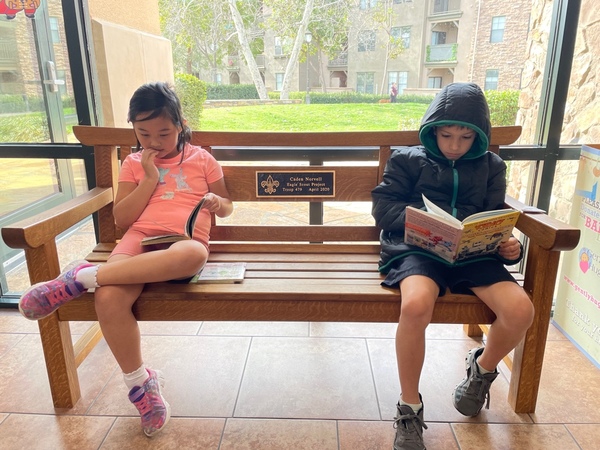(858) 759-0631
Let's talk about how an aged child explores society and how it functions and "practices" how to be in society. Going outs, or small group outings beyond the classroom, are another way for the elementary child to explore society. In these explorations, because the child is directly experiencing and navigating society, it is as if they are partaking in mini-sessions out in society.
What is going out anyway?
A going out is when a small group of students, usually two to six, go out of the classroom to explore an area of interest. Going outs result from lessons or research that the children are involved in. Going-outs have an extensive range, from walks in the neighborhood to trips to the zoo in downtown San Diego. For example, children in a lesson about different leaf varieties may explore varieties seen throughout the neighborhood around the school. They may take notes, sketch what they see, or make a collection of leaves. Another group of, perhaps older, students may plan a trip to the Botanic Gardens to explore the same or similar topic further.
Beyond providing an opportunity to explore an area of interest further and experience society in mini spurts, going outs also provide abundant opportunity to strengthen executive functioning. While a traditional field trip is conceived by, planned by, and executed by the adult, going outs are initiated by, planned by, and executed by the children. Going outs that involve venturing further into society, for example, one to a museum versus one in the neighborhood especially involves much planning.
We currently have three groups of students who are planning their first going out of the year.
Two groups are planning a trip to the 4s Ranch library to get more resources for their research. One of these groups is studying robots--how they work and how to build one. The other group is researching some holidays of December--Chanukah, Christmas, and Kwanza--and their history and customs.
The third group is planning a trip to the San Diego Safari Park, where they will interview caretakers, asking what the different names are for the different genders of the animals. A lesson on the same topic sparked this. This group has already done an incredible amount of work. They have called various animal care professionals, asking whether they still use particular nomenclature for female dogs. They have planned the driving route to and from the Safari Park and written it down. They have made a list of materials needed for the day, including lunch. They have talked about safety considerations in the car and the park and made a plan if things go awry. They have written a few interview questions for when they are at the park. And they have asked for a list of possible chaperones to call to take them.
Being a chaperone on these going-outs is one of my favorite parts of being a guide or teacher. Witnessing the responsibility and the empowerment that comes from independence and preparation for that independence is incredible. One of the hardest things to do, but most rewarding, is sitting back and watching the children solve a problem independently. I've witnessed a few times a group of students get lost and talk to each other about how to solve this problem. They have always been successful in solving this problem without my help because of all of the preparation we do in the classroom, and it is incredible to watch each time. You can't help but be filled with joy and pride in seeing this process (or hearing about it)!
I hope each of you gets the joy to hear about your child experiencing this at some point this year, whether from a going out in the neighborhood or from a going out within the county
-Millipedes Teacher

